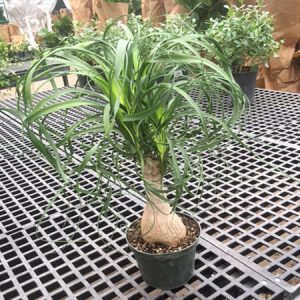Description
Photinia – Heteromeles – Stranvaesia –
There are 40-60 species of mostly fast growing, sometimes thorny, deciduous or evergreen large shrub and small trees, in the Rosaceae family, in this genus. They occur in woodland and thickets from the Himalayas to Eastern and Southeastern Asia. They produce alternate simple, non hairy, lance shaped to broadly ovate, smooth edged or finely toothed, mid to dark green, evergreen leaves are attractive and glossy, often brightly colored in shades of red when young, deciduous leaves often color well in autumn. The early summer borne small, 5 petaled flowers are mostly white, saucer to cup shaped, and are held in dense, terminal and axillary, corymb like panicles, followed by spherical or ovoid, usually dark blue or red fruits, to ½” across, which persist into winter. Grow deciduous species in a woodland garden, or as specimens on a lawn, grow evergreens as a hedge, in a shrub border, or among other trees and shrubs. Where marginally hardy, grow evergreen shrubs against a wall or in the shelter of trees.
Grow in fertile, moist but well drained soil in full sun or partial shade. Protect from strong winds.
Prone to crown gall, mushroom root rot, gray mold (botrytis), leaf scorch, and Entomossporium leaf spot.
P. davidiana var. undulata ‘Fructu Luteo’ – Stranvaesia davidiana -This upright evergreen tree or shrub grows 25′ feet tall and 20′ feet wide. It produces elliptical to inversely lance shaped, pointed, dark green, glossy leaves, to 6″ long, older leaves turn red in autumn. In mid summer it bears small white flowers held in corymb like panicles, 3″ across, followed by small, spherical, yellow fruit that may persist for a long time
Zones 7-9




